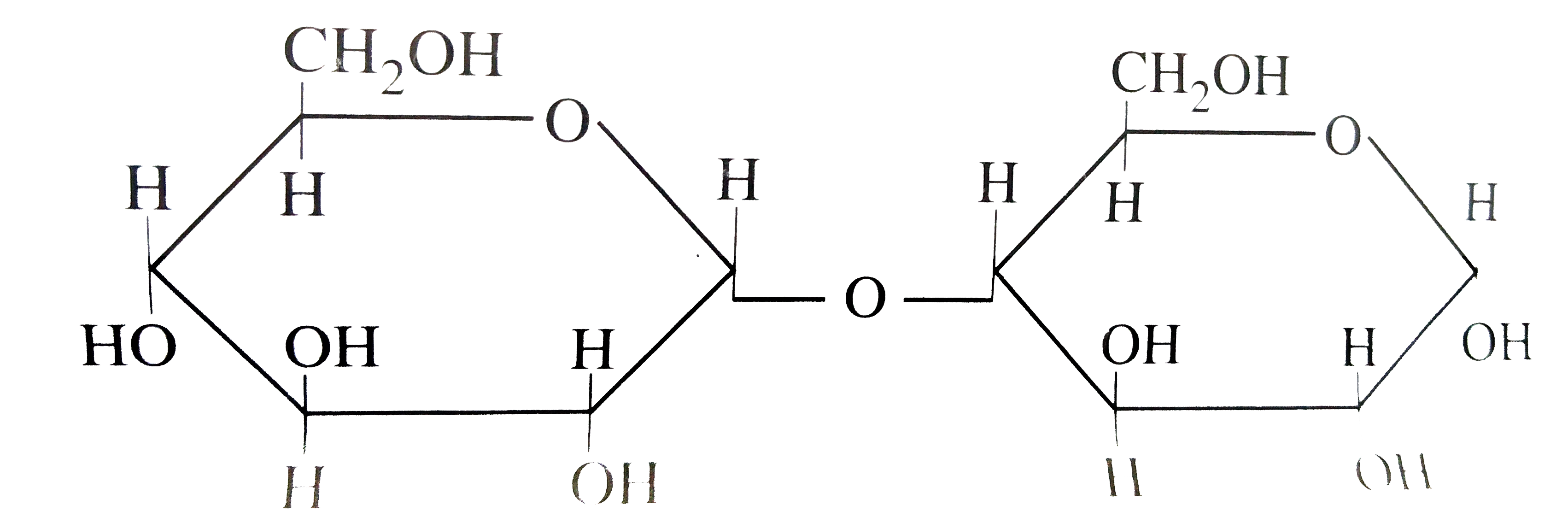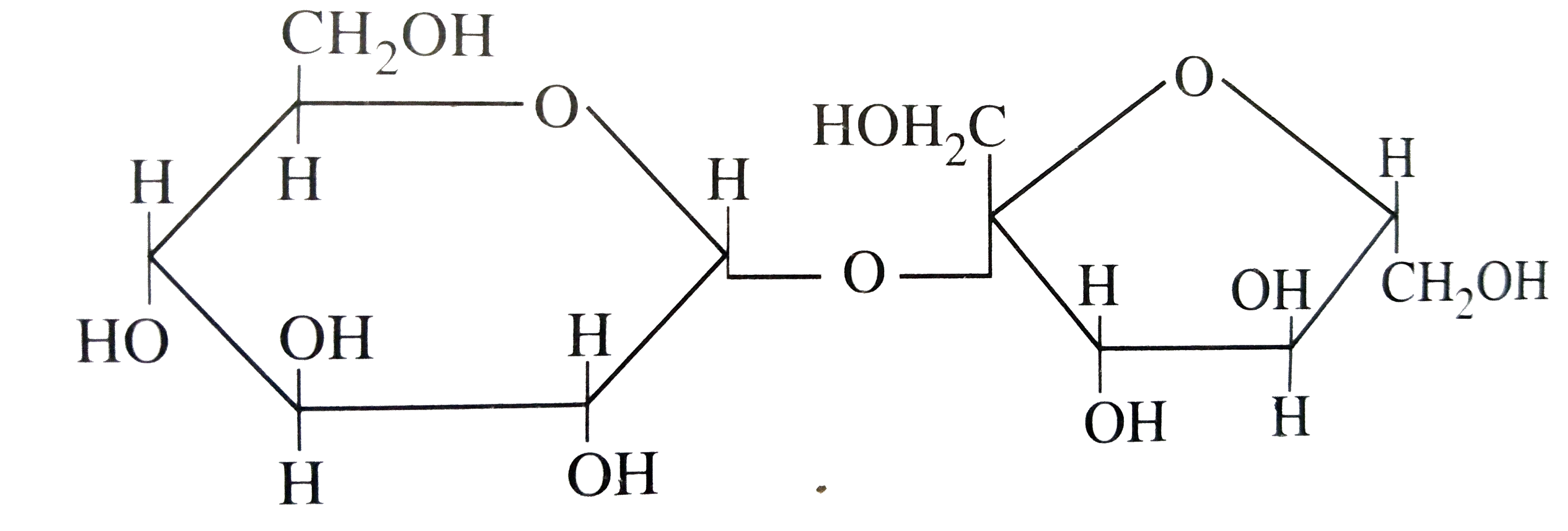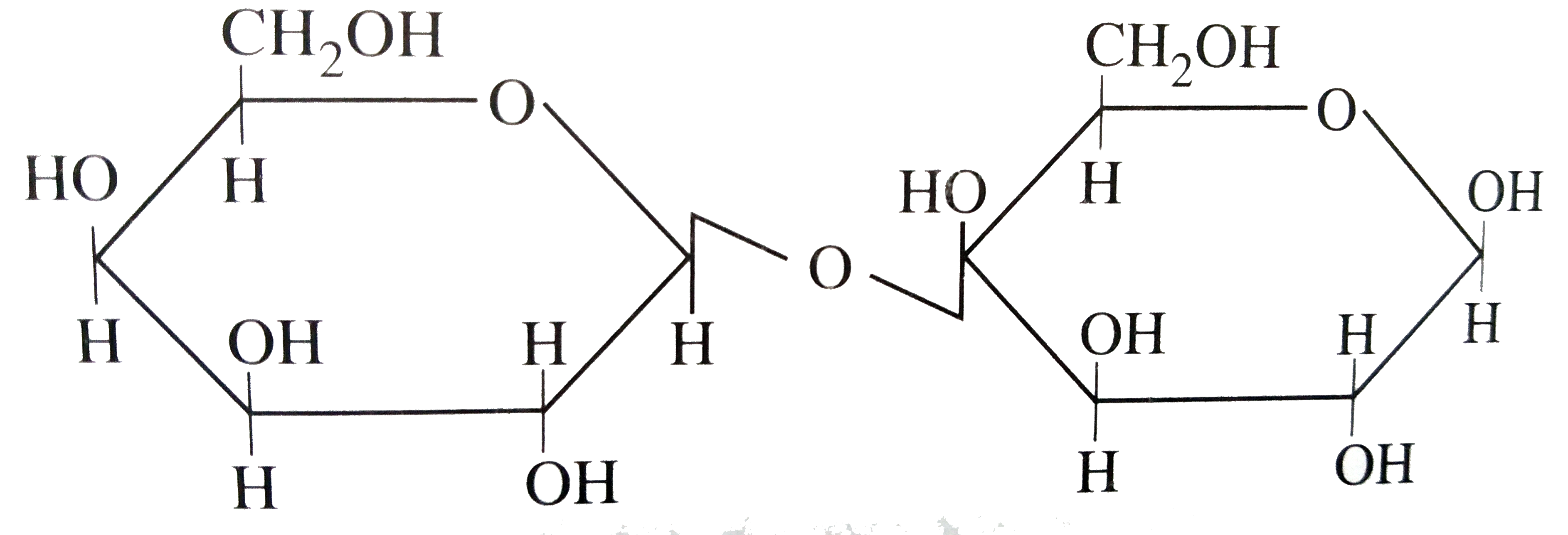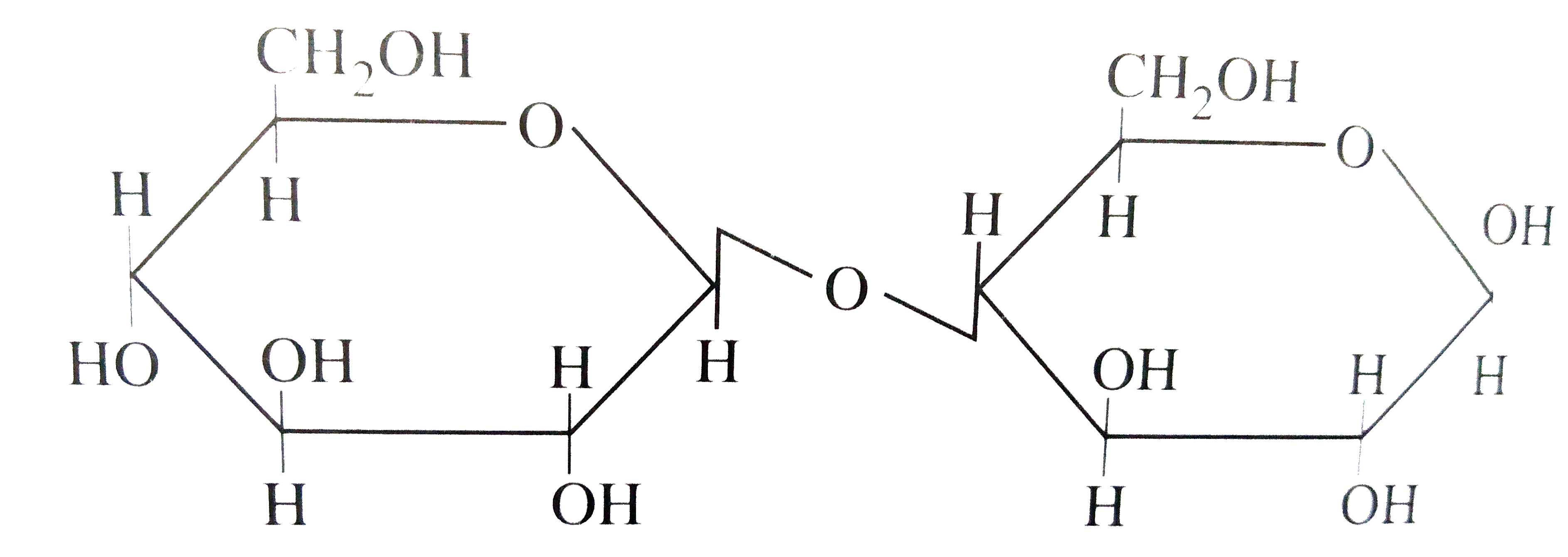Which is a non-reducing sugar?
glucose
sucrose
galactose
mannose
The correct Answer is:B
To determine which is a non-reducing sugar among the given options, we can follow these steps:
Step 1: Understand the Types of Sugars
- Sugars can be classified into two main categories: reducing sugars and non-reducing sugars.
- Reducing sugars have free aldehyde or ketone groups that can participate in redox reactions, while non-reducing sugars do not.
Step 2: Identify the Options
- The options provided are:
1. Glucose (monosaccharide)
2. Sucrose (disaccharide)
3. Galactose (monosaccharide)
4. Mannose (monosaccharide)
Step 3: Analyze Each Sugar
- Glucose: This is a monosaccharide with a free aldehyde group, making it a reducing sugar.
- Galactose: This is also a monosaccharide with a free aldehyde group, thus it is a reducing sugar.
- Mannose: Another monosaccharide with a free aldehyde group, hence it is a reducing sugar too.
- Sucrose: This is a disaccharide formed from glucose and fructose. In sucrose, the aldehyde group of glucose is involved in a glycosidic bond, which means it is not free to react. Therefore, sucrose does not reduce Tollens reagent or Fehling's solution.
Step 4: Conclusion
- Since sucrose does not have a free aldehyde or ketone group, it is classified as a non-reducing sugar. Therefore, the correct answer is option B: sucrose.
Summary of the Answer
The non-reducing sugar among the options provided is sucrose.
---
- Sugars can be classified into two main categories: reducing sugars and non-reducing sugars.
- Reducing sugars have free aldehyde or ketone groups that can participate in redox reactions, while non-reducing sugars do not.
- The options provided are:
1. Glucose (monosaccharide)
2. Sucrose (disaccharide)
3. Galactose (monosaccharide)
4. Mannose (monosaccharide)
- Glucose: This is a monosaccharide with a free aldehyde group, making it a reducing sugar.
- Galactose: This is also a monosaccharide with a free aldehyde group, thus it is a reducing sugar.
- Mannose: Another monosaccharide with a free aldehyde group, hence it is a reducing sugar too.
- Sucrose: This is a disaccharide formed from glucose and fructose. In sucrose, the aldehyde group of glucose is involved in a glycosidic bond, which means it is not free to react. Therefore, sucrose does not reduce Tollens reagent or Fehling's solution.
- Since sucrose does not have a free aldehyde or ketone group, it is classified as a non-reducing sugar. Therefore, the correct answer is option B: sucrose.
The non-reducing sugar among the options provided is sucrose.
Topper's Solved these Questions
- BIOMOLECULESBOOK - ICSECHAPTER - BIOMOLECULESEXERCISE - REVIEW QUESTIONS (FILL IN THE BLANKS)
20 Videos
- BIOMOLECULESBOOK - ICSECHAPTER - BIOMOLECULESEXERCISE - REVIEW QUESTIONS (ANALOGY TYPE QUESTIONS)
10 Videos
- BIOMOLECULESBOOK - ICSECHAPTER - BIOMOLECULESEXERCISE - NCERT EXERCISES WITH ANSWERS (DIFFERENTIATE BETWEEN)
25 Videos
- BIOLOGY ISC SAMPLE QUESTION PAPER 2019BOOK - ICSECHAPTER - BIOLOGY ISC SAMPLE QUESTION PAPER 2019EXERCISE - PART-II (SECTION -C)
6 Videos
- BODY FLUIDS AND CIRCULATIONBOOK - ICSECHAPTER - BODY FLUIDS AND CIRCULATIONEXERCISE - DIFFRENTIATE BETWEEN
13 Videos
Similar Questions
Knowledge Check
In disaccharides, if the reducing groups of monosaccharides, i.e., aldehydic or ketonic groups are bonded, these are non-reducing sugars. Which of the following disaccharide is a non-reducing sugar?
A B
B C
C D
D
Non-reducing sugar is
AmaltoseBsucroseClactoseDnone of these.Which of the following is non-reducing sugar ?
AGlucoseBSucroseCMaltoseDLactose
